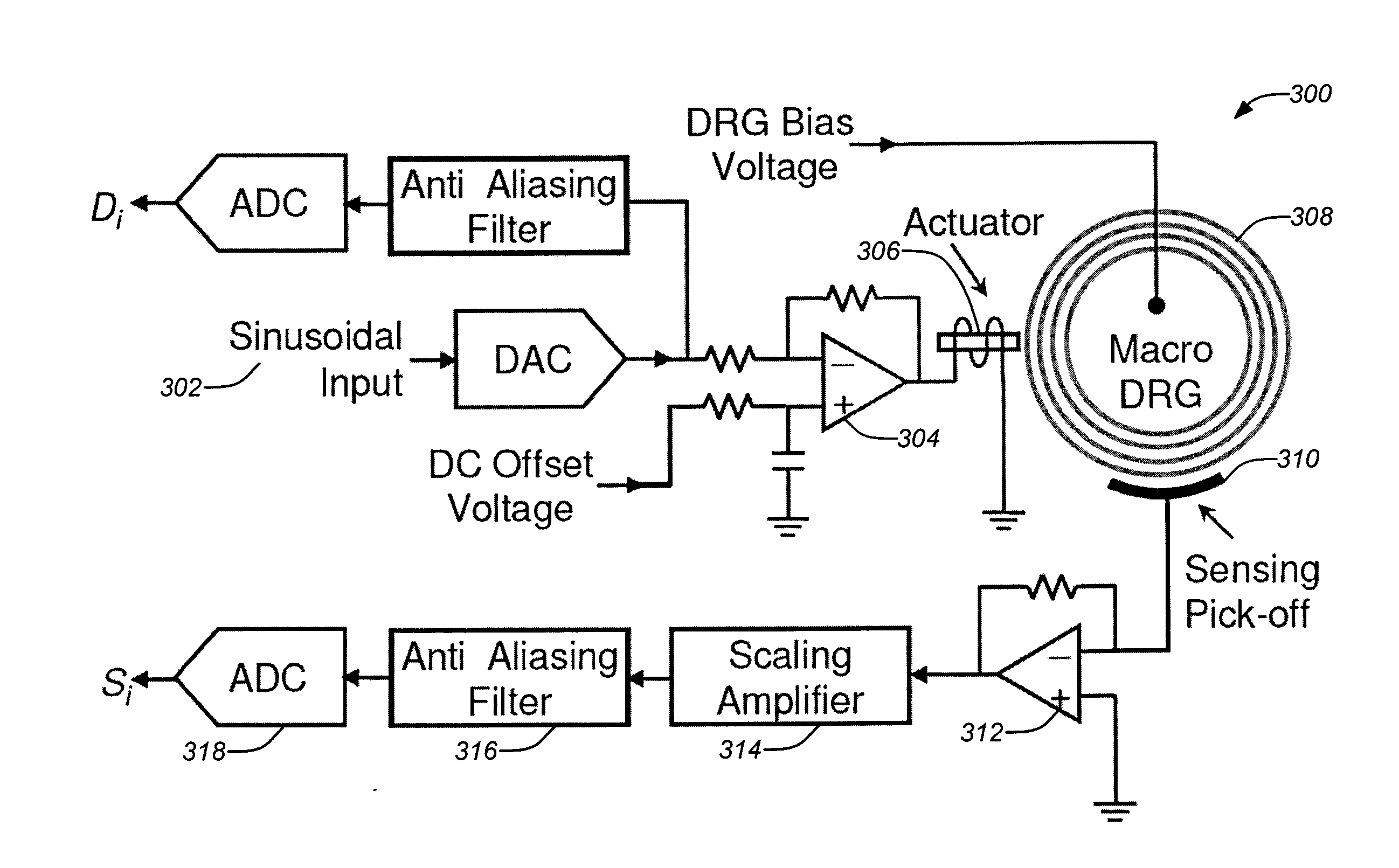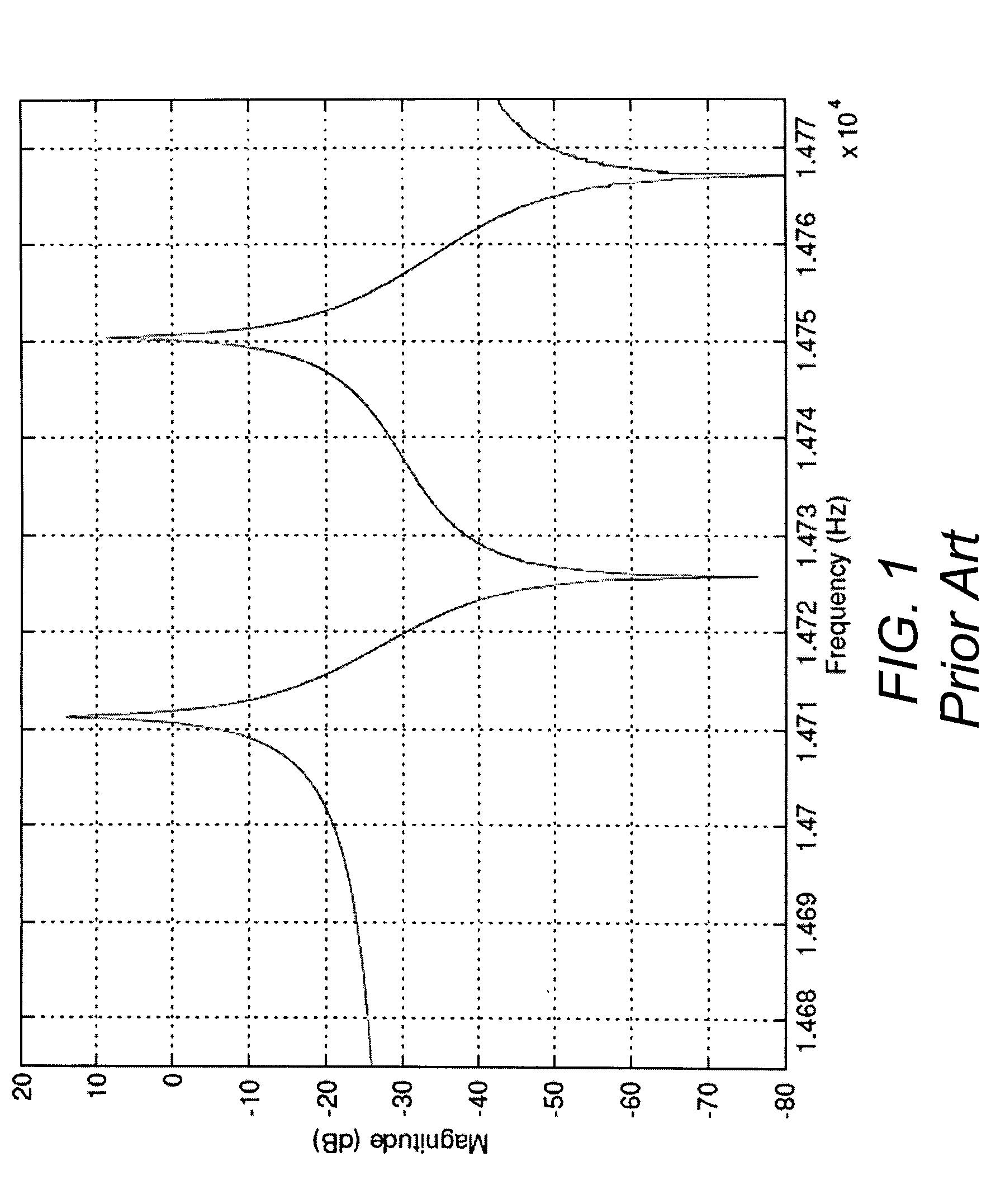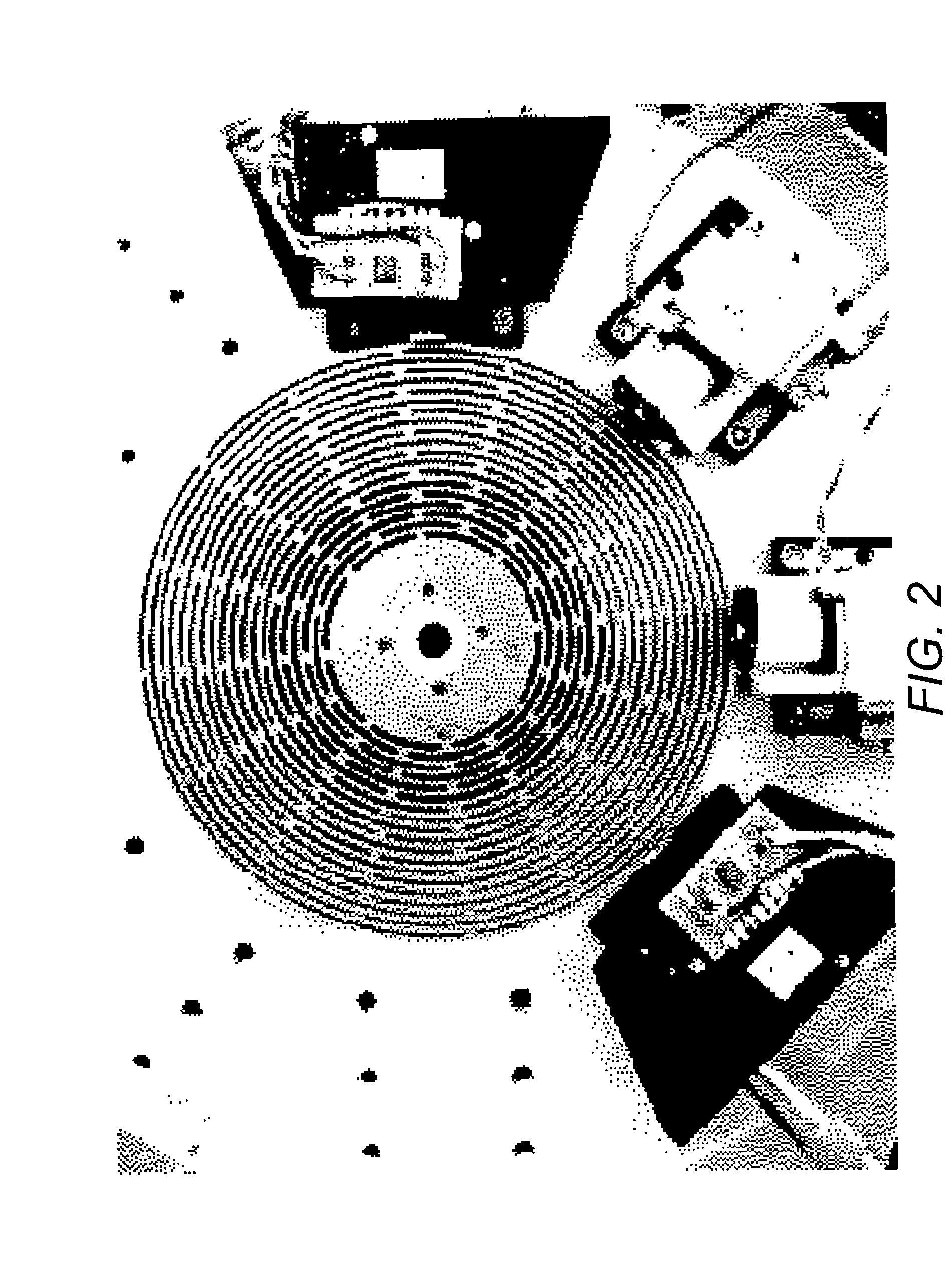Frequency tuning of disc resonator gyroscopes via resonator mass perturbation based on an identified model
a technology of disc resonator gyroscope and mass perturbation, which is applied in the direction of acceleration measurement using interia force, turn-sensitive devices, instruments, etc., can solve the problems of reducing energy dissipation, difficult to do compact, low-cost electronics, and local variations in etch rate that produce very small, so as to improve degeneracy and improve degeneracy
- Summary
- Abstract
- Description
- Claims
- Application Information
AI Technical Summary
Benefits of technology
Problems solved by technology
Method used
Image
Examples
Embodiment Construction
1. Overview
[0043]As previously mentioned, electrostatic tuning of the resonant modes in vibratory gyroscopes is often suggested as a means for compensating for manufacturing aberrations that produce detuned resonances. In high performance sensors, however, this approach can place very stringent requirements on the stability of the bias voltages used for such tuning. Furthermore, the bias voltage stability must be maintained over the operating environment, especially with regard to temperature variations.
[0044]This disclosure presents techniques for tuning the resonant modes in MEMS vibratory gyroscopes using mass perturbation of the sensor's resonant structure. The approach ameliorates the stringent bias voltage stability requirements and can be applied to any resonator gyroscope that relies on modal frequency matching for optimum performance.
[0045]Tuning modes of a disc resonator gyroscope (e.g., the SiDRG) can be accomplished by using a laser to strategically trim the resonator. I...
PUM
 Login to View More
Login to View More Abstract
Description
Claims
Application Information
 Login to View More
Login to View More - R&D
- Intellectual Property
- Life Sciences
- Materials
- Tech Scout
- Unparalleled Data Quality
- Higher Quality Content
- 60% Fewer Hallucinations
Browse by: Latest US Patents, China's latest patents, Technical Efficacy Thesaurus, Application Domain, Technology Topic, Popular Technical Reports.
© 2025 PatSnap. All rights reserved.Legal|Privacy policy|Modern Slavery Act Transparency Statement|Sitemap|About US| Contact US: help@patsnap.com



